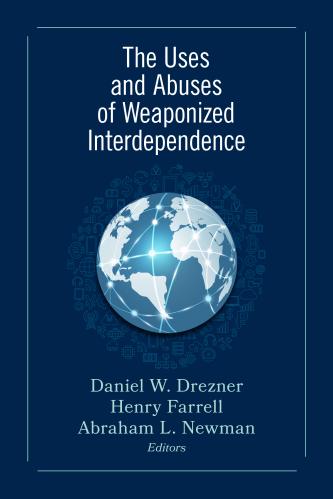Studies in this week’s Hutchins Roundup find economic overheating is not strongly linked to financial instability, local supply contributes to prescription opioid abuse, and more.
Want to receive the Hutchins Roundup as an email? Sign up here to get it in your inbox every Thursday.
An unusually strong economy doesn’t necessarily lead to financial vulnerability
Despite concerns that the current strong U.S. economy might lead to too much risk taking, Elena Afanasyeva, Seung Jung Lee, Michele Modugno, and Francisco Polomino of the Federal Reserve Board find no strong link between macroeconomic overheating and financial vulnerability. They note that credit imbalances tend to evolve much more gradually than business cycles, suggesting that the link between them is tenuous. In addition, information on the business cycle is only modestly helpful in predicting future financial vulnerability, and measures of financial vulnerability provide even less information about the future of the business cycle. Therefore, the authors argue that a sustained period of unusually strong macroeconomic performance only contributes modestly to financial vulnerability.
Local supply contributes to prescription opioid abuse
Opioid overdose deaths cause more than 100 deaths each day, and have sparked a national debate about the causes of addiction. Some researchers point to individual characteristics like mental health or economic circumstances that increase the demand for opioids; others point to factors like overprescribing physicians and “pill mills” that increase supply. Amy Finkelstein and Heidi Williams of MIT and Matthew Gentzkow of Stanford University use data on Medicare and disability insurance recipients to study how moving to counties with higher rates of prescription opioid abuse affects the probability that individuals will abuse the drugs. They show that individuals migrating to high-abuse counties immediately begin abusing at a higher rate than they did prior to the move, and that moving to a low-abuse county reduces the likelihood of abuse. Location-based factors explain about 30 percent of the difference in opioid abuse rates between counties at the 25th percentile and counties at the 75th percentile of the abuse spectrum, with the remaining 70 percent explained by person-specific factors. They conclude that supply-side policies that restrict opioid availability could potentially reduce opioid abuse.
Low rates on existing mortgages may reduce the Fed’s stimulative power in the next recession
How much room does the Fed have to stimulate the U.S. economy? David Berger and Konstantin Milbradt of Northwestern University, Fabrice Tourre of Copenhagen Business School, and Joseph Vavra of the University of Chicago argue that the answer depends not only on current interest rates, but also on their previous path. This is because households are less likely to refinance their mortgages in response to a drop in mortgage rates triggered by a Fed interest rate cut when previous rates were low than when they were high. For instance, if mortgage rates have been at, say, 4 percent for a long time, and they fall to 3 percent as the result of Fed rate cuts, many homeowners will refinance. But if many homeowners took mortgages when rates were extraordinarily low, a Fed rate cut is less likely to induce homeowners to refinance, limiting the stimulative impact of the Fed move. The authors conclude that, even if the Fed raises rates substantially before the next recession, it will likely have less ammunition available for stimulus than in recent recessions.
Chart of the week: Infrastructure spending at all levels of government stalled in the 2000s

Quote of the week:
“[…] new digital technologies are making it harder to accurately measure the components of supply and demand. Our ability to measure the impact of digital technology is constantly playing catch-up with the technology itself. This is not just true for investment. It is also becoming more complicated to measure how much households spend and import. Digital technology makes it easier than ever to make purchases online, from anywhere in the world. When I was a teenager, buying albums for my record collection, it was easy to determine the cost of the purchases and say whether they were imports. It is much more complicated today when people download digital music purchased from iTunes or stream songs from Spotify,” says Stephen Poloz, governor of the Bank of Canada.
“The point is that the emergence of new technologies is another source of uncertainty […] In the face of such uncertainties, we cannot operate monetary policy mechanically. Rather, policy becomes a matter of risk management. We must assess carefully the upside and downside risks to the outlook for inflation, and decide how best to manage and balance those risks.”
The Brookings Institution is committed to quality, independence, and impact.
We are supported by a diverse array of funders. In line with our values and policies, each Brookings publication represents the sole views of its author(s).









Commentary
Hutchins Roundup: Economic overheating, local opioid supply, and more
October 18, 2018